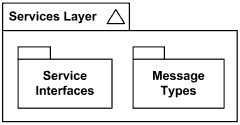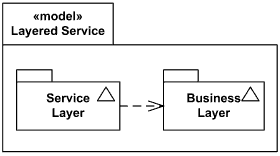UML Model
Model is a specialized UML package which describes a system from a certain point of view, viewpoint. The viewpoint may also refer to a profile definition. Models are used to draw model diagrams.
[UML 2.5 FTF - Beta 1] is not very consistent defining the scope of the model, a system. In one place it says that a model captures a view of a physical system, while in another one - that system is meant in the broadest sense and may include not only software and hardware but organizations and processes.
It means that different models can be provided for the same system, each model representing the system from a different viewpoint or at a different abstraction level.
UML 2.5 loosely defines stakeholders "by example", as e.g., designers, users, or customers of the system.
Examples of the stakeholders include customers, user groups, upper management, product owners, project managers, development teams, software quality engineers, etc.
UML 2.5 specification is also inconsistent between its intentions and examples explaining models. While it states that a model is complete in the sense that it covers the whole system, an example provided shows models representing parts (tiers) of a system.
Model contains a hierarchical set of elements that together describe the system. It may also contain a set of elements that represents the environment of the system, typically actors, together with their relationships. As these are external to the system, they may be collected outside of the hierarchy in separate packages. These external elements and the elements representing the system may be associated with each other.
Model is notated using the ordinary package symbol (a folder icon) with a small triangle in the upper right corner of the large rectangle.

Business layer model
If contents of the model are shown within the large rectangle, the triangle may be drawn to the right of the model name in the tab.

Service Layer model contains service interfaces and message types
Model could be notated as a package with the keyword «model» placed above the name of the model.

Stereotyped model Layered Service.
You can see an example of a model diagram of a layered application based on Microsoft Application Achitecture Guide, 2nd Ed. here - Multi-Layered Application Model.